NGC5053, Globular Cluster
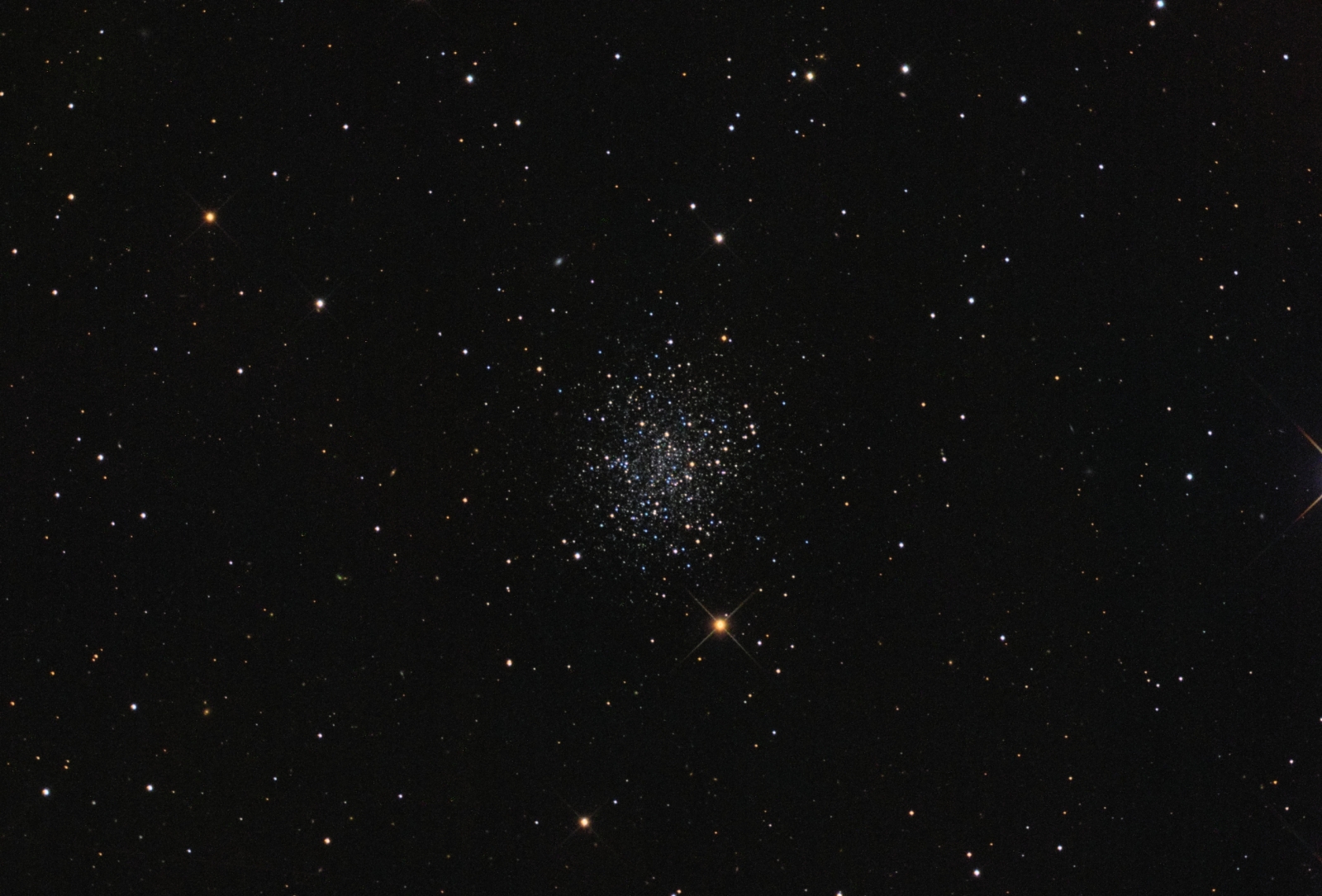 Click image for full size version
Click image for full size version
May 18, 2015
I am back to my hunt for under-appreciated — or at least under-imaged — objects. This image captures globular cluster NGC5053. It tends to be ignored by imagers and observers alike, including me up until recently, because of its surroundings: NGC5053 lies near a much brighter, richer cluster, M53, and and there are lots of interesting galaxies in the area too. It contains only a few thousand stars, so lacks the dense central condensation of stars seen in most globulars, which can contain hundreds of thousands of stars. It belongs to Class 11 of the Shapley–Sawyer Concentration Class for describing globular clusters, where Class 12 is the most sparse. In the eyepiece it looks to me more like an open cluster, but in an image it has the mix of red and blue stars that I see in most globular clusters, and seldom in open clusters. This cluster is about 1/3 the width of the full Moon. Given that it lies 53,500 light years from us, that makes it about 160 light years across. There are quite a few small galaxies scattered throughout the image — look for soft and/or oval “stars” and short spindle-like streaks.
Tekkies:
SBIG STL-11000M camera, Baader RGB filters, 10″ f/6.8 ASA astrograph, Paramount MX. Guided with STL-11000’s external guider and 80 mm f/6 Stellar-Vue refractor. Acquisition and guiding with Maxim-DL. Focusing with FocusMax. Automation with CCDCommander. Calibration, cosmetic correction, registration, integration and all processing in PixInsight. Shot from my SkyShed in Guelph, Ontario. No moon, good to very good transparency and average seeing throughout acquisition.
14x10m R, 9x10m G and 13x10m B unbinned frames (total=6hr).
RGB:
Creation and cleanup: R, G and B masters were cropped and combined to make an RGB image which was processed with DBE and ColourCalibration.
Stretching: HistogramTransformation was applied to make a pleasing yet bright image. TGV Noise was applied and the image was re-stretched to reset the black point.
Synthetic Luminance:
Creation and cleanup: The cropped R,G and B masters were combined using the ImageIntegration tool (average, additive with scaling, noise evaluation, iterative K-sigma / biweight midvariance, no pixel rejection). DBE was applied to neutralize the background.
Deconvolution: A copy of the image was stretched to use as both a range mask and local deringing support. Deconvolution was applied (100 iterations, regularized Richardson-Lucy, external PSF made using DynamicPSF tool with about 20 stars; local deringing at 70% and no global deringing).
Linear Noise Reduction: MultiscaleLinearTransform was applied to reduce noise in Layers 1 and 2.
Stretching: HistogramTransformation was applied to make a pleasing yet bright image. TGV Noise was applied and the image was re-stretched to reset the black point.
Combining SynthL with RGB:
The luminance channel of the RGB was extracted, processed and then added back into the RGB image as follows:
1. Extract luminance from the RGB image.
2. Apply LinearFit using the SynthL channel as a reference.
3. Use ChannelCombination in Lab mode to replace the RGB’s luminance with the fitted luminance from step 2.
4. LRGBCombine was then used to make a SynthLRGB image.
Final Processing
A star core mask was made by applying morphological transformation and convolution to a copy of SynthL. Colour saturation in star cores was increased using this mask. Colour saturation of the background was decreased and the background darkened using Curves with the same mask, inverted.
Image scale is about 1.1 arcsec per pixel for this camera / telescope combination.

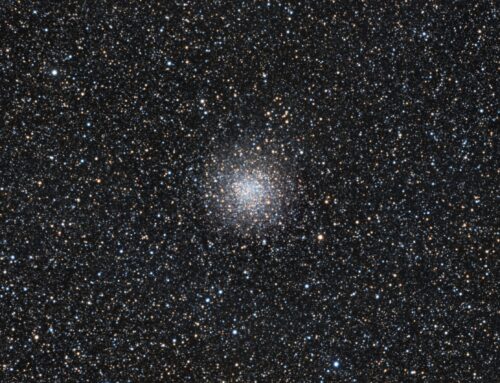
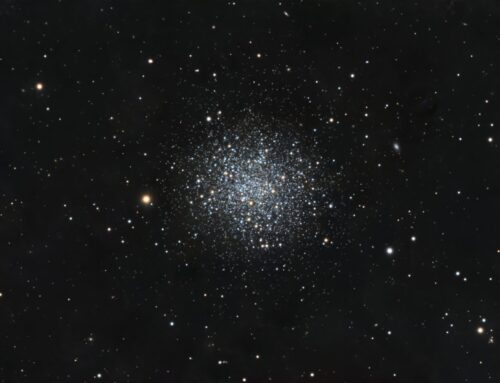
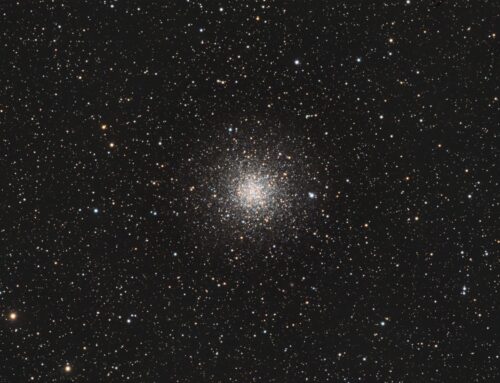
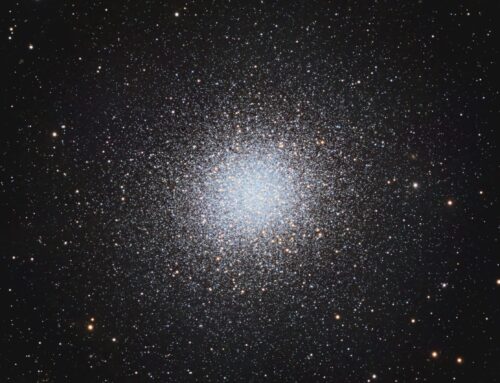
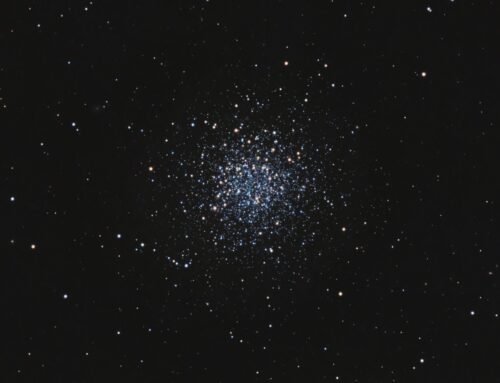
good image